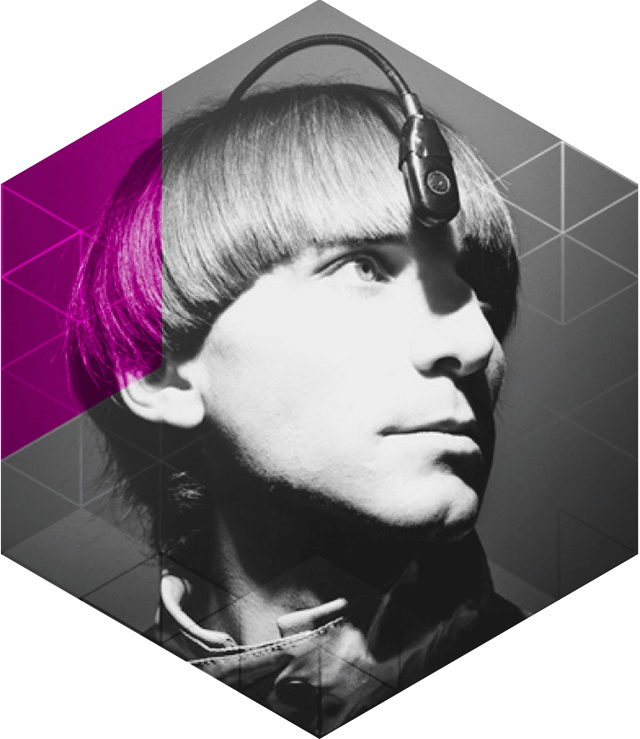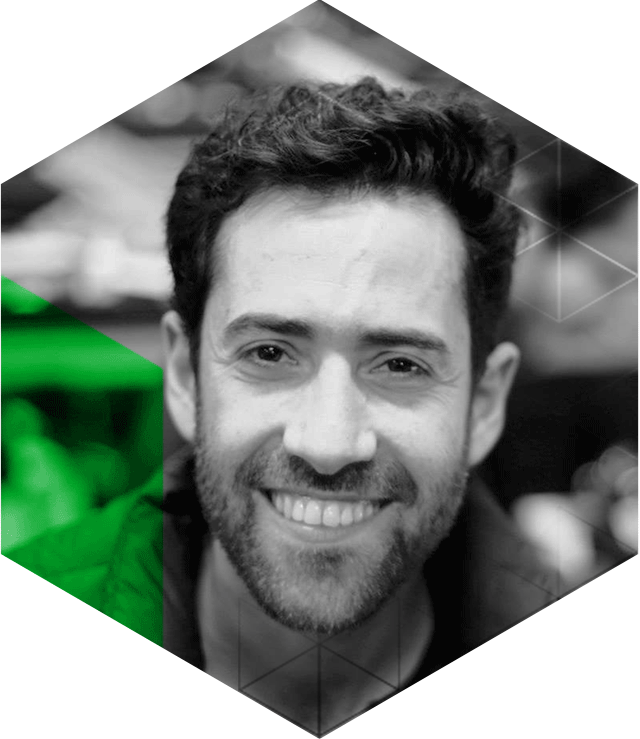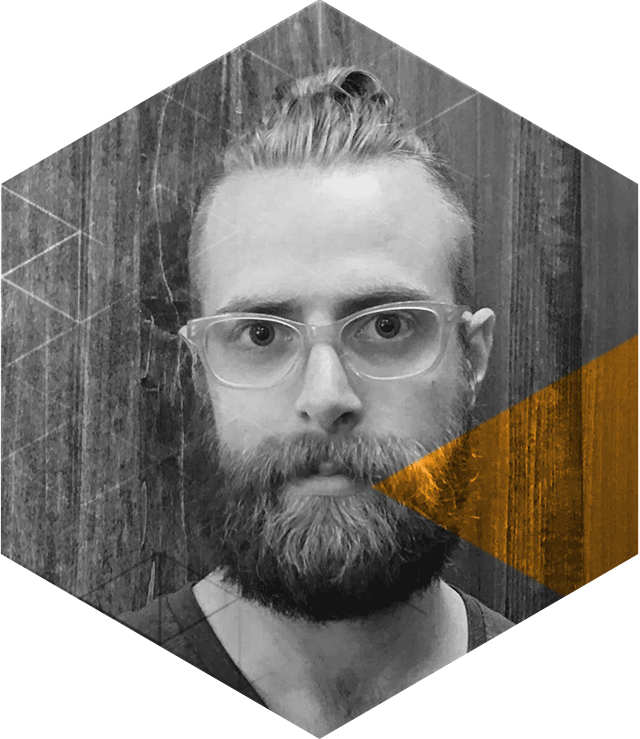Time Sense
Residency Season: Summer 2016
Time Sense is a wearable sensory headband which allows the wearer to feel the passing of the 24-hour clock around the circumference of the head. As the day progresses, a tiny heat sensation passes the length of the headband.
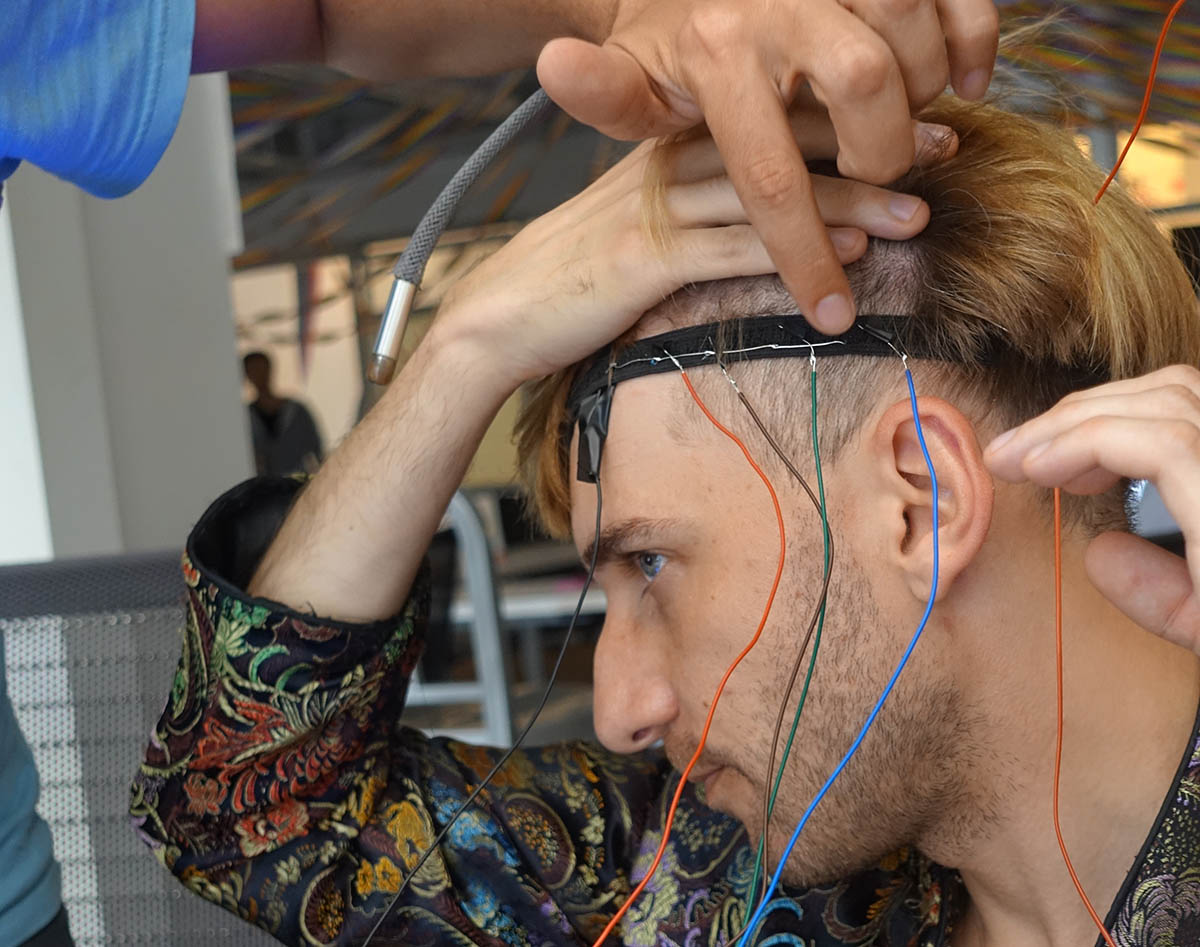
This device is an example of an ‘exosense’, an external sensory organ. This means it is designed to be worn and felt consistently, twenty-four hours a day, seven days a week.
The constant stream of sensations will allow Neil to develop a new form of instinctual relationship with the time of the day. This is a key part of what defines the term cyborg for Neil — an always-on sensory relationship with a constant technological data stream.
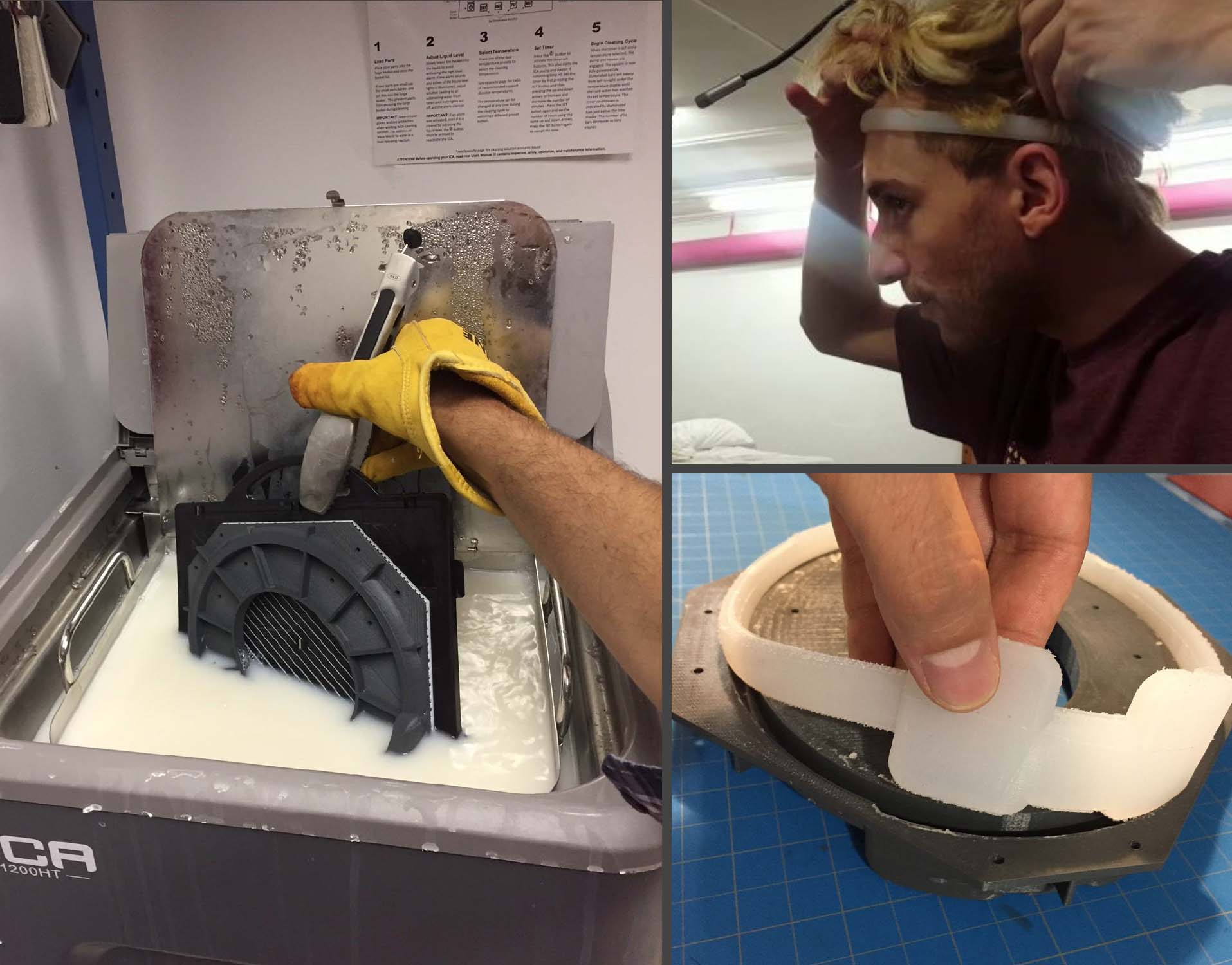
To begin the process of creating the durable wearable, a 3D model of the prototype was created, shown in the picture below. The model incorporates miniature versions of the electronics from the functional proof of concept, along with materials chosen based on research by the ThoughtWorker Caihong Liu, based in Chengdu China, during the residency.
Based on the prototype model, a 3D virtual two-part mold from which the wearable could ultimately be cast.
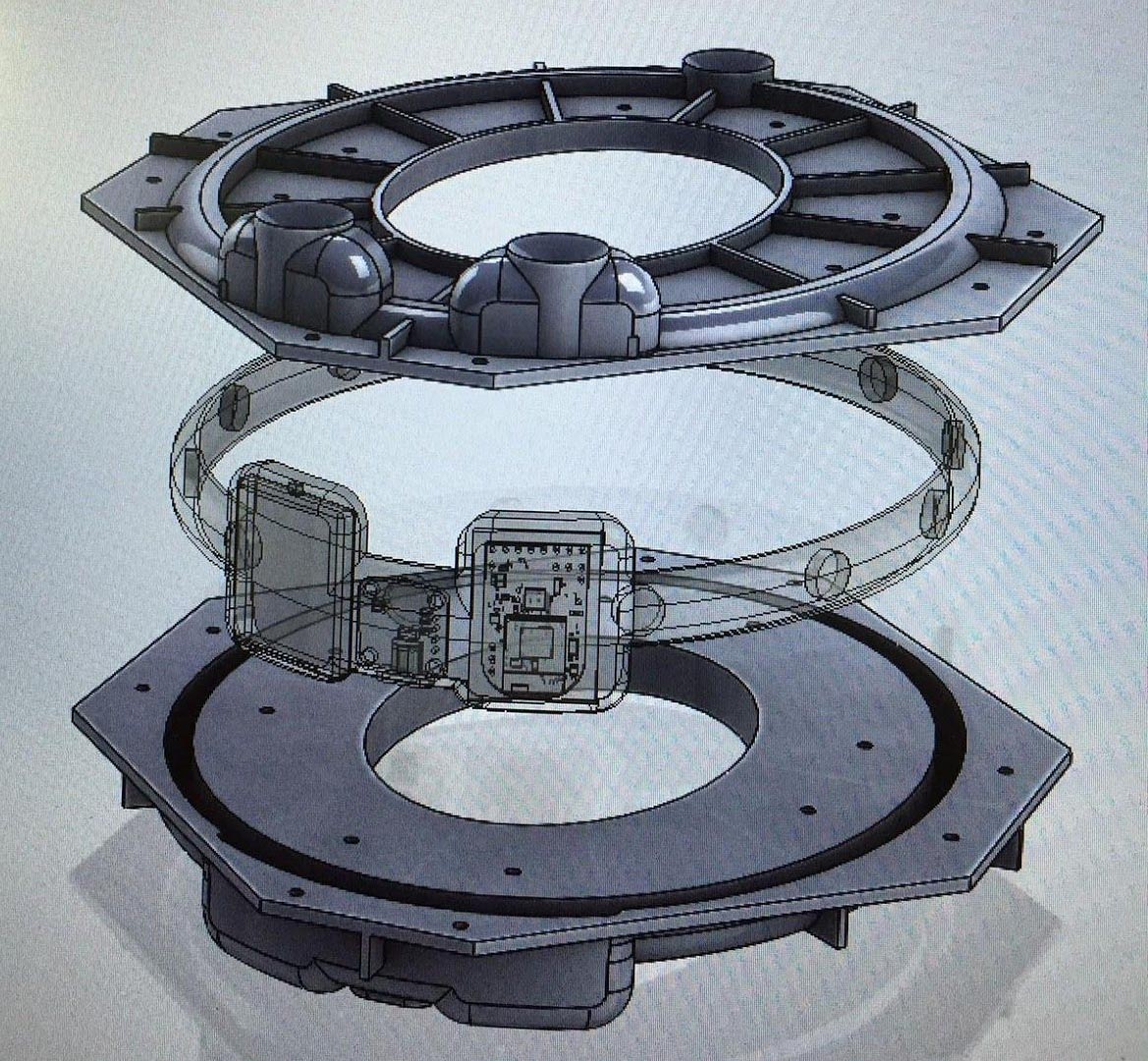
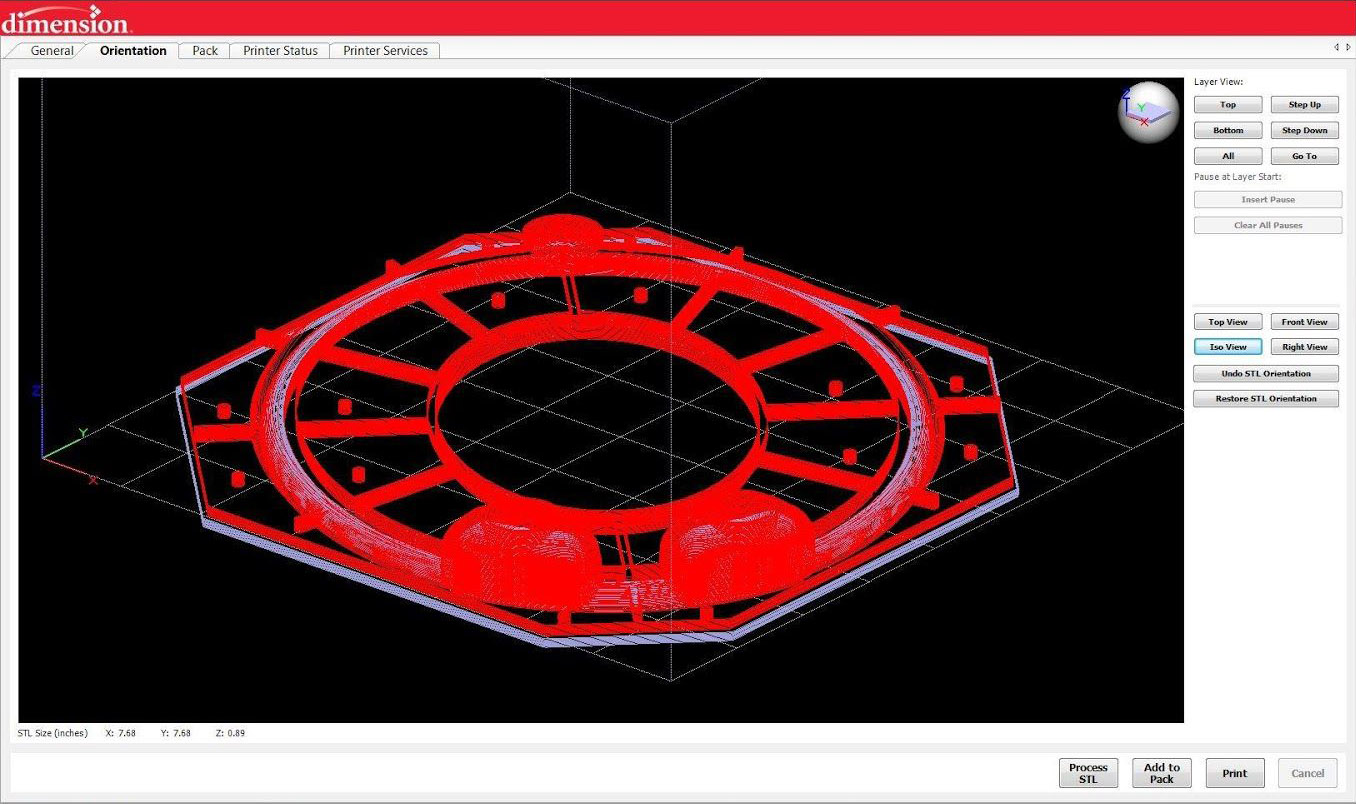
Later renamed as the Solar Crown, this wearable prototype allows artist Neil Harbisson and the team to learn and reflect about how the sense might operate as a permanent implant. This is similar to the process behind Neil’s existing permanent implant, an antenna which allows him to perceive color as sound, which was also prefigured by a wearable prototype.
The project was publicly unveiled at Princeton University in 2017.
At @Princeton University unveiling the Solar Crown - a new sensory organ for the sense of time @Cyborg_FDN #cyborg #as #artificialsense #cyborgfoundation pic.twitter.com/p3jwblVSU4
— Neil Harbisson (@NeilHarbisson) December 3, 2017
Neil was featured in the 2017 documentary “Cyborgs Among Us” where he shared his experiences as a cyborg and how technological innovations have enabled him to sense color and time.
Neil’s work has been written up by National Geographic, CNN, NPR, The Atlantic, BBC, Business Insider, Microsoft Research, CNET, Huffington Post, Washington Post, Forbes, Financial Times, WIRED and Slate, among many others.

